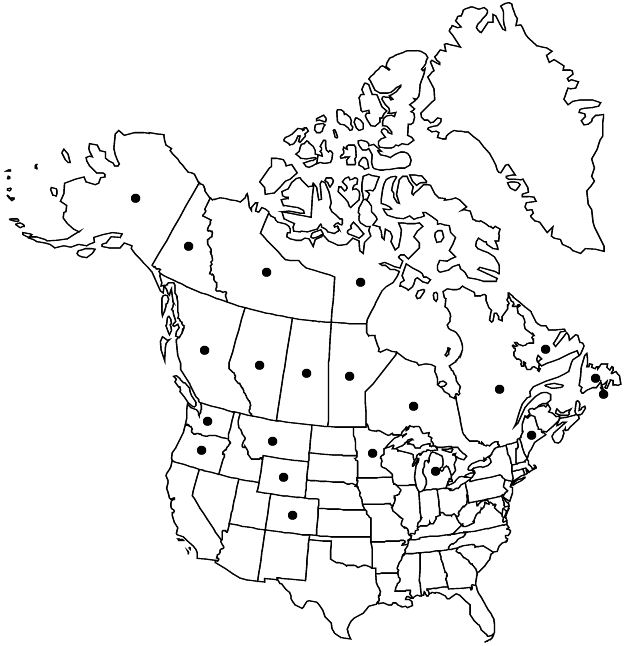Rubus arcticus
Sp. Pl. 1: 494. 1753.
Herbs, 0.5–3 dm, unarmed. Stems erect, thin, weak, ± woody basally, glabrous or sparsely hairy, eglandular, not pruinose. Leaves deciduous, simple and usually 3-lobed or ternate; stipules ovate to lanceolate, 4–8 mm; blade margins dentate, serrate, or doubly serrate, abaxial surfaces sparsely to moderately pubescent, eglandular. Inflorescences axillary, 1–3-flowered. Pedicels glabrous or sparsely to moderately pubescent, eglandular or stipitate-glandular. Flowers bisexual; petals pink to rose or magenta, obovate to oblanceolate, 8–25 mm; outer filaments dilated basally, inner filiform; ovaries glabrous or sparsely hairy, styles filiform. Fruits reddish to dark purple, globose, to 1 cm diam., rarely larger; drupelets (10–) 15–30, weakly coherent, separating with torus attached.
Distribution

Alta., B.C., Man., N.W.T., Nunavut, Ont., Que., Sask., Yukon, Alaska, Colo., Maine, Mich., Minn., Mont., Oreg., Wash., Wyo., Eurasia
Discussion
Subspecies 3 (3 in the flora).
Selected References
None.
Lower Taxa
Key
| 1 | Leaves simple, usually 3-lobed. | Rubus arcticus subsp. stellatus |
| 1 | Leaves usually ternate | > 2 |
| 2 | Central leaflets ovate to rhombic, bases rounded to attenuate, not cuneate, apices usually acute; flowers 1–3; petals obovate, apex entire or slightly emarginate. | Rubus arcticus subsp. arcticus |
| 2 | Central leaflets ovate to obovate, bases cuneate, apices usually rounded; flowers solitary; petals oblanceolate to obovate, apex slightly to strongly emarginate. | Rubus arcticus subsp. acaulis |
"thin" is not a number."dm" is not declared as a valid unit of measurement for this property.